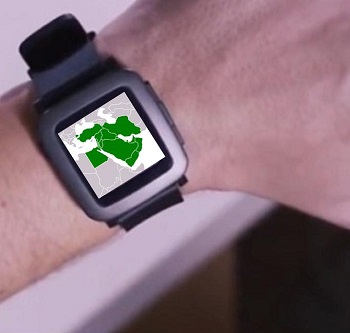The company has been looking into expanding its manufacturing efforts into the country.
A delegation of representatives from Huawei have now met with Ravi Shankar Prasad, India’s Telecom Minister, as the company has been thinking of expanding their manufacturing of mobile phones from China into India.
The company is looking for ways to continue its mobile device production with additional advantages.
At the moment, Huawei is looking over certain potential business models for manufacturing the mobile phones in India, while they also consider certain potential tax incentives for making the move. The delegation was led by the CEO in India, Jay Chen. They met with the Telecom Minister in order to discuss the intentions of the company for making their way into India for the purpose of manufacturing. Prasad explained that “We had a very elaborate talk and they have said that till now they have invested $2 billion in India in the last 16 years.”
The company already has a facility in the country and are already selling mobile phones in India.
 Prasad stated that “They have a facility in Sriperumbudur… they are selling one million phones in India… if you are selling one million phones, you better start manufacturing here and they have promised me, they will explore the possibility.” He also pointed out that Huawei is in discussions with Foxconn for the moment, on a contract basis. The minister stated that India welcomed the business.
Prasad stated that “They have a facility in Sriperumbudur… they are selling one million phones in India… if you are selling one million phones, you better start manufacturing here and they have promised me, they will explore the possibility.” He also pointed out that Huawei is in discussions with Foxconn for the moment, on a contract basis. The minister stated that India welcomed the business.
At the moment, the Indian offices from Huawei are serving forty different mobile networks around the globe. That said, the decision to begin the manufacturing of the mobile devices in India is not yet a done-deal.
When asked about the intentions of the company for manufacturing mobile phones in India, one of the delegation members underscored the fact that it still depends on a number of different factors. Among those factors includes business volumes and Huawei has yet to complete its evaluation of the figures within that category, including various business models, policies and regulations within the country and tax incentives. At the moment, the company manufactures network equipment in India not consumer devices.
Companies throughout that region are taking a closer look at wearable technology and are making investments.
Businesses throughout the Middle East are starting to look at wearables more seriously and this is being reflected in the growing investment that is being seen in these types of mobile devices.
That said, this doesn’t mean that there aren’t any more barriers in the way of the growth of this industry.
Organizations throughout the Middle East are increasingly starting to build business models based on the use of werables. Predictions from industry analysts are suggesting that over the next three years there will be substantial growth seen in the use and investment into wearable technology. Among the reasons that this industry is being driven forward is that there is a broader availability to the type of devices and features that are available, but also they are becoming more familiar.
As certain types of wearables become more mainstream, it opens the door to the adoption of others.
 The region is about to see the launch of a whole new wave of everything from smartwatches to virtual reality headsets and even connected clothing. As a result, the wearable technology market in the Middle East and Africa (MEA) region is expected to see a growth rate of 56 percent from 2016 through 2019. This according to forecasts released by IDC.
The region is about to see the launch of a whole new wave of everything from smartwatches to virtual reality headsets and even connected clothing. As a result, the wearable technology market in the Middle East and Africa (MEA) region is expected to see a growth rate of 56 percent from 2016 through 2019. This according to forecasts released by IDC.
The fact that wearable technology devices are convenient, lightweight and small forms of mobile gadgets that allow people to complete various types of task either hands free or at least without having to take their smartphones out of their pockets, they have a considerable draw within the business community. Smartwatches are drawing a particularly large amount of attention as they can act as scaled down versions of smartphones combined with fitness trackers.
IDC MEA analyst, Feras Ibrahim explained that while the market for wearables is seeing a substantial growth, the hurdles that are still faced should not be forgotten or overlooked. Among the leading issues standing in the way is in the limited number of apps that are geared toward these tiny screen devices. Moreover, many of the designs are clunky or require a premium price point for a device that would suit business attire.
 Prasad stated that “They have a facility in Sriperumbudur… they are selling one million phones in India… if you are selling one million phones, you better start manufacturing here and they have promised me, they will explore the possibility.” He also pointed out that Huawei is in discussions with Foxconn for the moment, on a contract basis. The minister stated that India welcomed the business.
Prasad stated that “They have a facility in Sriperumbudur… they are selling one million phones in India… if you are selling one million phones, you better start manufacturing here and they have promised me, they will explore the possibility.” He also pointed out that Huawei is in discussions with Foxconn for the moment, on a contract basis. The minister stated that India welcomed the business.
 The region is about to see the launch of a whole new wave of everything from smartwatches to virtual reality headsets and even connected clothing. As a result, the wearable technology market in the Middle East and Africa (MEA) region is expected to see a growth rate of 56 percent from 2016 through 2019. This according to forecasts released by IDC.
The region is about to see the launch of a whole new wave of everything from smartwatches to virtual reality headsets and even connected clothing. As a result, the wearable technology market in the Middle East and Africa (MEA) region is expected to see a growth rate of 56 percent from 2016 through 2019. This according to forecasts released by IDC.